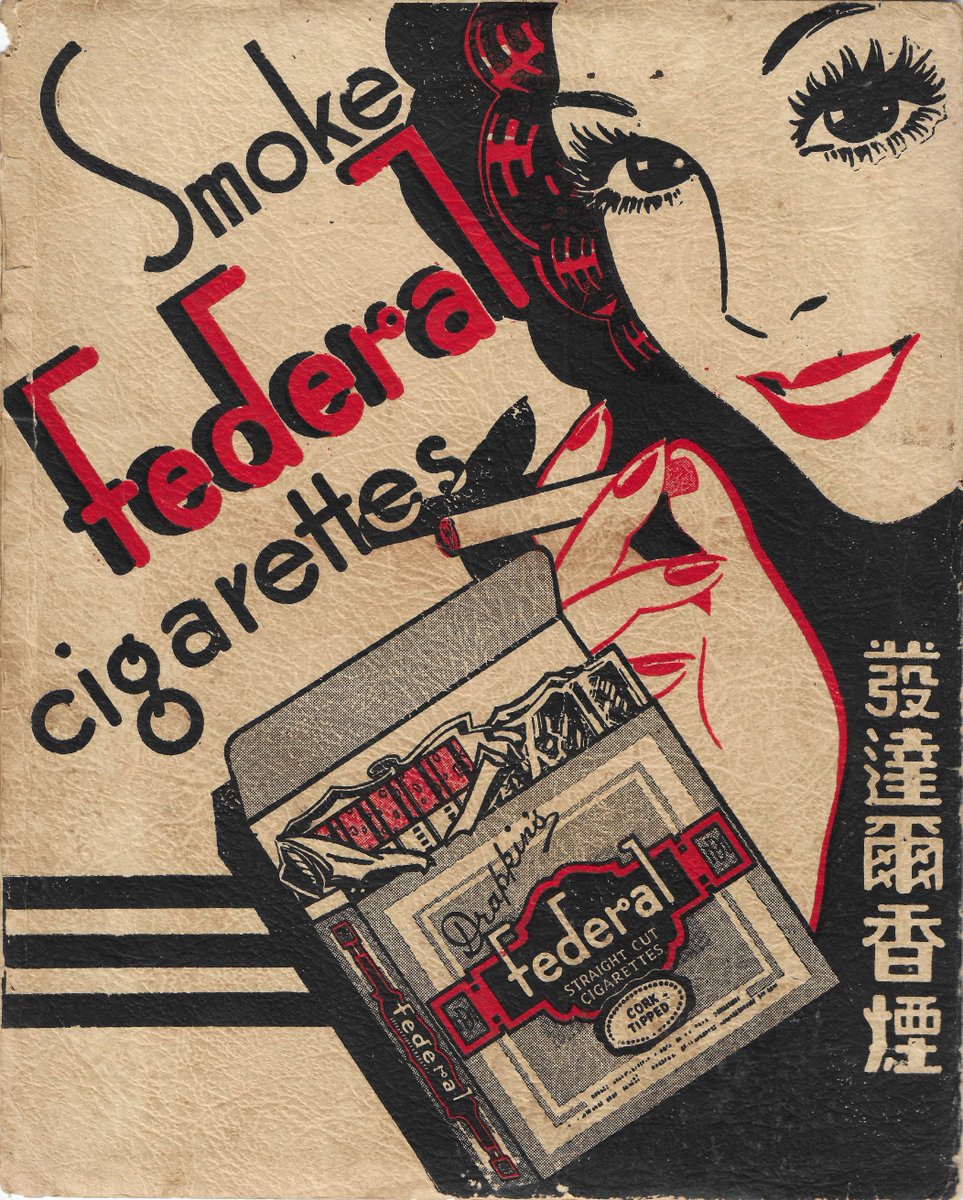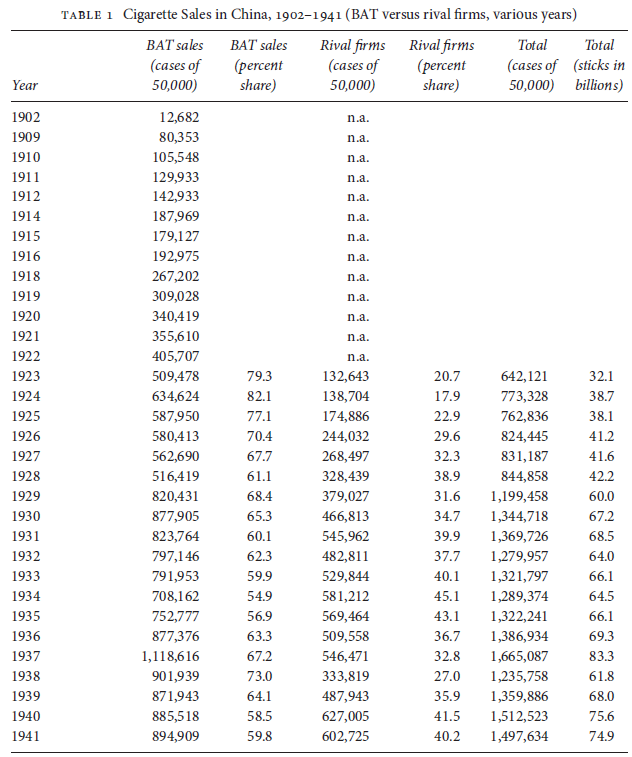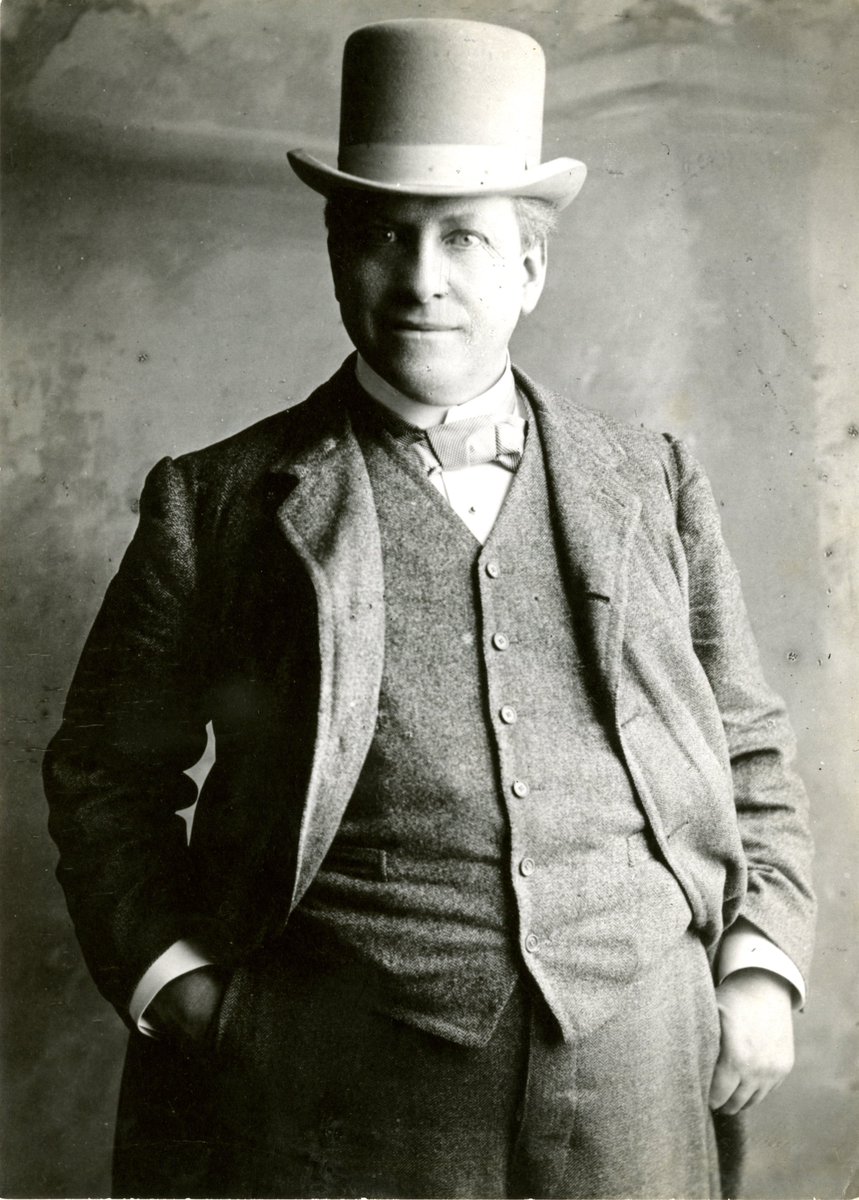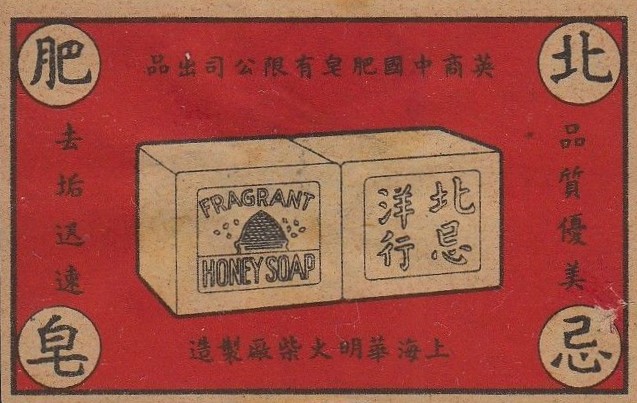The Jintan Conspiracy: Advertising is known to use subliminal messaging, but this banner ad from our collection, tells the incredible story of a brand that not only shaped fashion trends but allegedly paved the way for Japan’s invasion of China in 1937 with a secret code: 🧵1/22 

Hiroshi Morishita (1869–1943), founded the Morishita &Co Apothecary in Osaka in 1893. Shortly after in 1895, he was drafted for the Sino-Japanese War & deployed in Taiwan where he observed the locals taking herbal pills to reduce the risk of contracting diseases. Upon his... 2/22 

..return to Japan, Hiroshi capitalized on his newfound knowledge to create the brand Jintan (仁丹) in 1905. Known for its silver-coated, pellet-like pills, it was marketed as a cure-all for various ailments & promoted as “pocket medicine” that could easily be carried in a... 3/22 



..special brass case. The name Jintan, which translates to “Humane Elixir”, combines the Confucian term jin (仁, humaneness, benevolence), with the Daoist term tan (丹, pills containing cinnabar) evoking the notion of longevity and health. Similar to his patent medicine... 4/22 

..contemporaries in the Western world, Morishita Hiroshi became a pioneer of modern advertising in Japan. Mr. Morishita deeply understood the importance of publicity and invested up to one-third of his revenues in newspaper advertisement and outdoor enamel billboards. 5/22 

Additionally, the company became famous for its large and electrically illuminated advertising towers, often referred to as "Jintan towers", which were erected at Osaka Station, Ueno & Asakusa in Tokyo. Within just 2 years Jintan became the largest single advertiser & the... 6/22 

..best-selling medicine in #Japan. Driven by its success Morishita established an export department to develop sales channels overseas in 1907. In November 1908, the first Jintan adverts appeared in China's largest newspaper, the Shenbao. By that year, Morishita had... 7/22 

...already established consignment sales to 4,000 postal agencies across China. The company also maintained sales offices in the cities of Shanghai, Hankou & Tianjin, with each branch responsible for a sales territory encompassing 5 or 6 of China's provinces. Morishita... 8/22 





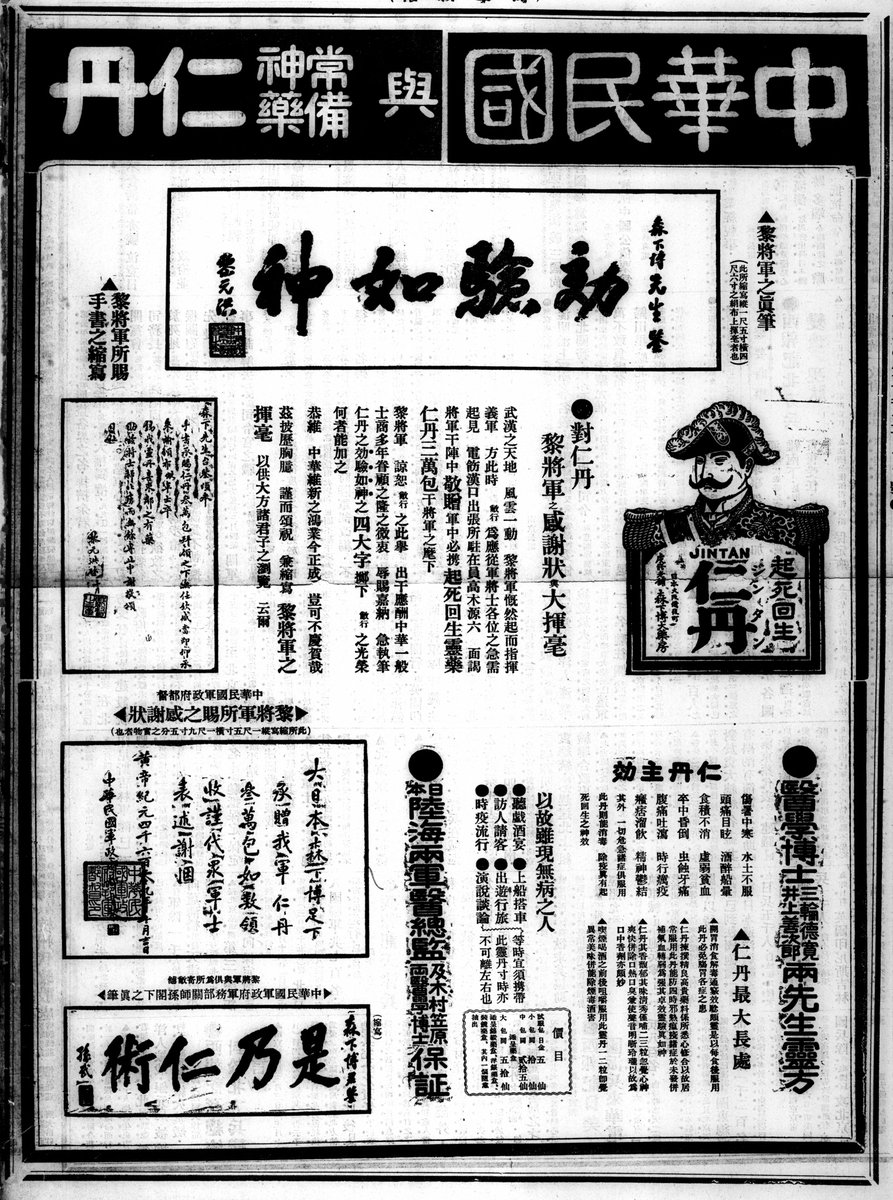

..recruited Chinese-owned businesses as distributors and convinced them to sell Jintan to the exclusion of Western pharma products by granting them 7 to 10 months of credit, compared to the 3 months offered by Western companies. Before long, Jintan ads inundated Chinese... 9/22 

..consumers through every conceivable medium – newspapers, magazines, billboards, posters, handbills, calendars & parades of sandwich board carries. The brand's iconic logo, or "chop" as it was called then, stood out above all else: a Bismarckian man with a twirled-up... 10/22 

..mustache & a Napoleon hat. A historic report by J.W. Sanger, U.S. Trade Commissioner, described how, “The best chop is nearly always pictorial, supplemented in most cases with a few easily read Chinese characters. One of the very best chops is that used by the Japanese... 11/22 

..Jintan which is advertised and used all over China. The chop consists of nothing but the head and shoulders of a man with a moustache and a distinctive kind of hat, together with two simple Chinese characters that even the most illiterate coolie can read and remember.” 12/22 

With this powerful combination of iconic logo & massive ad spending, Jintan became the most popular foreign-made medicine in #China within just a few years. In a 1917 report Thomas Sammons, US Consul General in #Shanghai, estimated that Jintan sales were equal to those... 13/22 

..of all the other foreign patent medicine firms combined. In the 1920s, Jintan had made the man on its logo so familiar that he actually influenced men’s fashions in China, with many Chinese men growing similar beards. However, the influence of Jintan allegedly extended... 14/22 







..beyond fashion. The fact that the Japanese medicine was prominently advertised at busy waypoints such as city gates, but at the same time also in some of the most remote places throughout China, had long raised suspicion. On the eve of the Second Sino-Japanese War, on... 15/22 

..June 25, 1936, the Hubei Provincial Government dispatched an intelligence report about increased Japanese espionage activity around Huanggang city. Allegedly, disguised Japanese spies erected Jintan advertisement billboards in remote locations & paid unknowing locals to.. 16/22
..have Jintan ads painted on their houses. This ominous report fueled the conspiracy theory that Jintan advertisements carried a secret code meant to guide Japanese army troops & increase their marching speed on the road. Apparently, this tactic had already been used by... 17/22 

..Japanese spies during the Shanghai incident in 1932. It was alleged to have worked as follows: When both sides of the Jintan man’s mustache pointed up, it signaled that the road ahead was safe to pass. If the left side faced down, the road to the left was blocked, and... 18/22 

..vice versa for the road on the other side if the mustache was turned down on the right. If both sides of the beard pointed down, the road was a dead end. It's difficult to determine whether the Jintan conspiracy theory was ultimately true or not. However, it is a fact... 19/22 

..that after the full-scale outbreak of the Second Sino-Japanese War in July 1937, the Chinese government ordered the removal of all Jintan advertisements, which had become a long-despised symbol of Japanese imperialism and cultural invasion. 20/22 







Today, almost 90 years later, the Jintan conspiracy has largely been forgotten. Nevertheless, the brand @official_jintan supposedly behind it continues to thrive in Japan and is celebrating its 130-year anniversary this year. 21/22 gintsubu.jintan.jp
Even in China, Hiroshi Morishita's iconic medicine has left a lasting cultural impact: the term "Jintan beard" (仁丹胡) is still used in Chinese today to describe the type of moustache sported by the infamous man with the hat all those years ago. 22/22 mofba.org/2023/05/04/the…
• • •
Missing some Tweet in this thread? You can try to
force a refresh

 Read on Twitter
Read on Twitter

